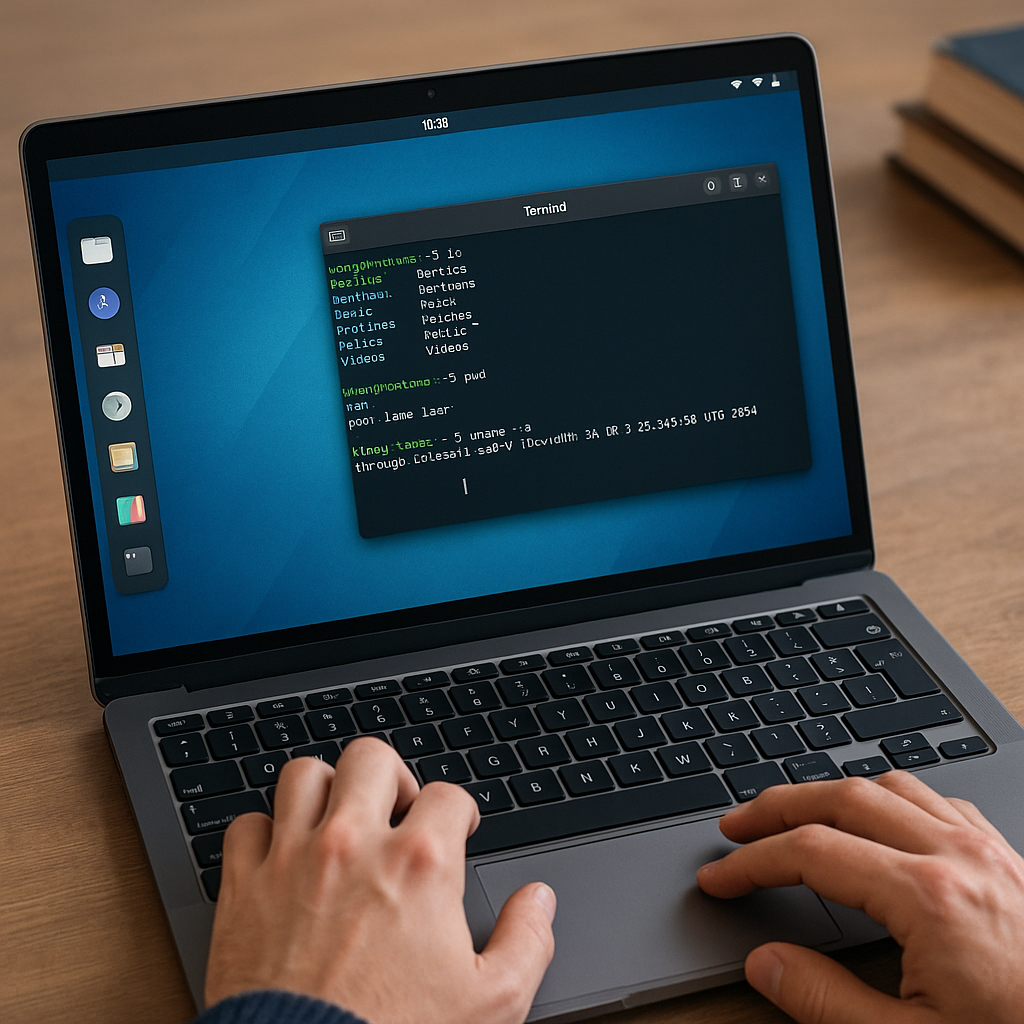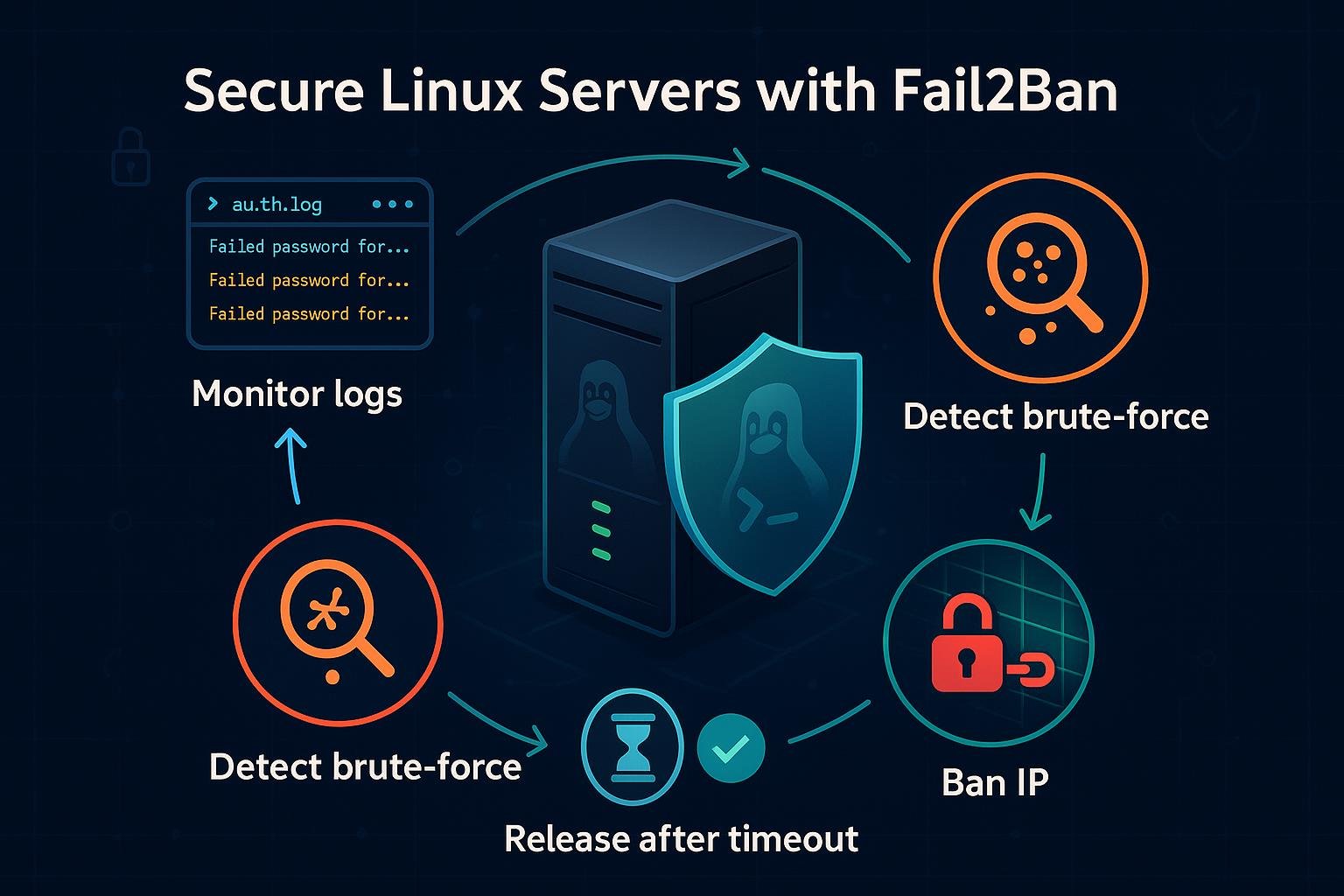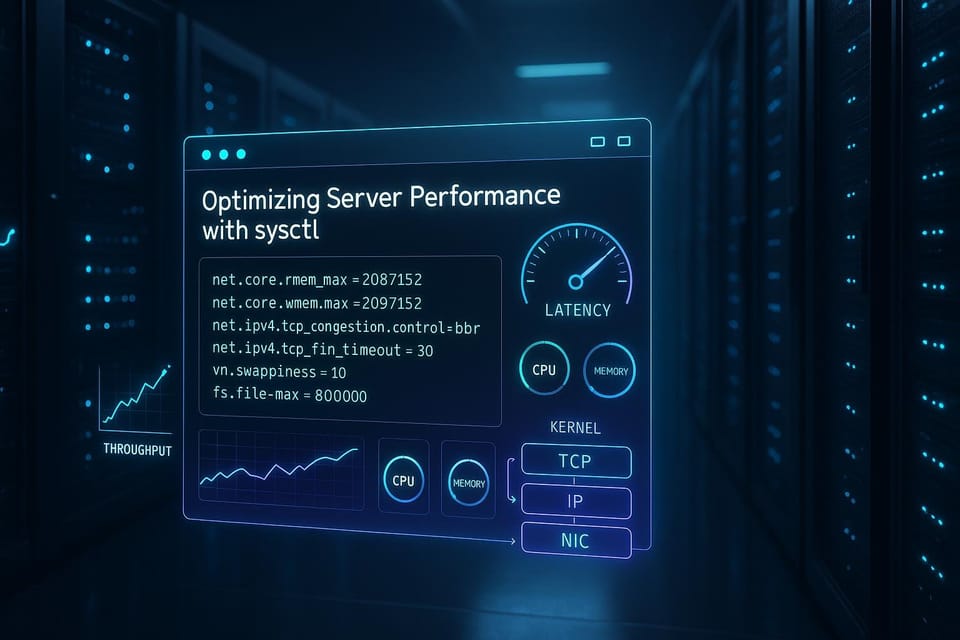How to Learn Linux: A Complete Beginner-to-Advanced Guide
Master Linux step-by-step with this complete guide for beginners and advanced users. Learn essential commands, file systems, scripting, and system administration with clear examples and explanations.

Linux is one of the most powerful, flexible, and widely used operating systems in the world. From powering web servers and cloud systems to running Android and IoT devices, Linux is everywhere. Learning Linux opens the door to a world of automation, development, cybersecurity, and DevOps opportunities.
This guide is designed for complete beginners who want to start from scratch and grow to an advanced Linux user or system administrator.
🧭 1. Understanding What Linux Is
Linux is not a single operating system but a family of open-source systems built around the Linux kernel. It’s similar to Windows or macOS in function, but it’s open, customizable, and free.
| Component | Description |
|---|---|
| Kernel | The core that communicates between hardware and software. |
| Shell | The interface where users enter commands. |
| File System | Organizes data into directories and files. |
| Distribution (Distro) | A complete Linux system (e.g., Ubuntu, Debian, Fedora). |
💡 Example:
When you run a command like:
ls /home
You’re using the shell to ask the kernel for a list of directories in the /home folder.
💻 2. Choosing the Right Linux Distribution
There are hundreds of Linux distributions (distros). Each serves a slightly different purpose.
| Purpose | Recommended Distribution | Description |
|---|---|---|
| Beginners | Ubuntu, Linux Mint | Easy installation, user-friendly, large community. |
| Servers | Debian, CentOS, AlmaLinux | Stable, reliable for production. |
| Advanced Users | Arch Linux, Gentoo | Highly customizable, good for learning internals. |
| Cybersecurity | Kali Linux, Parrot OS | Preinstalled hacking and security tools. |
💬 Tip: Start with Ubuntu or Linux Mint — they’re ideal for learning.
🧩 3. Installing Linux
🖥️ Option 1: Dual Boot
You can install Linux alongside Windows.
Use Rufus to create a bootable USB and select “Install Ubuntu alongside Windows.”
🧱 Option 2: Virtual Machine
If you want to test Linux safely, use VirtualBox or VMware:
# Create a new virtual machine
sudo apt install virtualbox
☁️ Option 3: Cloud Learning
You can practice Linux on cloud platforms like:
- AWS Cloud9
- Google Cloud Shell
- Azure Sandbox
🧠 4. Learning the Linux File System Structure
Linux organizes everything in a single directory tree starting at /.
| Directory | Purpose |
|---|---|
/home | User files and folders |
/etc | Configuration files |
/var | Variable data (logs, mail) |
/usr | Installed programs |
/bin | Essential user commands |
/root | Administrator’s home directory |
Example command:
cd /etcls
👉 Navigates to the configuration folder and lists contents.
🧾 5. Essential Linux Commands (Beginner Level)
| Command | Description | Example |
|---|---|---|
pwd | Show current directory | pwd |
ls | List files | ls -l /home |
cd | Change directory | cd /usr/local |
cp | Copy files | cp file.txt /home/user/ |
mv | Move/rename files | mv file.txt old.txt |
rm | Remove files | rm file.txt |
cat | View file contents | cat notes.txt |
man | Show manual page | man ls |
💡 Practice tip:
touch test.txtecho "Learning Linux!" > test.txtcat test.txt
⚙️ 6. Managing Users and Permissions
Linux is a multi-user system. Each file has an owner, group, and permissions.
| Permission | Symbol | Meaning |
|---|---|---|
| r | Read | Allows viewing the file |
| w | Write | Allows editing the file |
| x | Execute | Allows running the file |
Example:
ls -l# -rw-r--r-- 1 user group 1200 Oct 27 file.txt
To change permissions:
chmod 755 script.shchown user:group file.txt
🧮 7. Working with Packages
Linux software is installed via package managers.
| Distribution | Package Manager | Command Example |
|---|---|---|
| Ubuntu/Debian | apt | sudo apt install nginx |
| Fedora/RedHat | dnf or yum | sudo dnf install httpd |
| Arch Linux | pacman | sudo pacman -S firefox |
Updating and upgrading:
sudo apt update && sudo apt upgrade
🧰 8. Process and System Monitoring
| Command | Description |
|---|---|
ps aux | Show running processes |
top | View CPU and memory usage live |
htop | Enhanced process viewer |
df -h | Show disk usage |
free -h | Show memory status |
uptime | Check how long the system has been running |
💡 Example:
top
👉 Press q to exit.
🌐 9. Networking Basics
Linux provides excellent tools for networking and diagnostics.
| Command | Description |
|---|---|
ifconfig | Show network interfaces |
ping | Test connection |
netstat | Show network connections |
ss -tuln | Show open ports |
curl | Fetch data from URLs |
scp | Secure file transfer |
Example:
ping google.com
curl -I https://linux.dargslan.com
🧮 10. Working with Shell Scripts
A shell script automates commands.
Example:
#!/bin/bash
echo "Welcome to Linux!"
date
Save it as welcome.sh, make it executable:
chmod +x welcome.sh
./welcome.sh
💡 Practice tip:
Create daily backup scripts or automatic system updates.
🔒 11. File Ownership, Groups, and Permissions Deep Dive
| Command | Description | Example |
|---|---|---|
chmod | Change permissions | chmod 644 file.txt |
chown | Change owner | chown user file.txt |
chgrp | Change group | chgrp admins file.txt |
Permission Modes Table
| Mode | Meaning | Example |
|---|---|---|
| 755 | Owner can read/write/execute, others can read/execute | chmod 755 script.sh |
| 644 | Owner can read/write, others can read | chmod 644 config.txt |
| 700 | Only owner has full access | chmod 700 secrets.txt |
⚡ 12. Intermediate Topics
- Crontab (Automation):
crontab -e
0 2 * * * /home/user/backup.sh
Runs backup daily at 2 AM.
- Systemd Services:
sudo systemctl status sshsudo systemctl enable nginx
- Environment Variables:
export PATH=$PATH:/usr/local/bin
🧩 13. Advanced Concepts
| Area | Description |
|---|---|
| Networking | Configure interfaces, firewalls, routing |
| Security | SELinux, AppArmor, iptables |
| Virtualization | KVM, Docker, LXC |
| Automation | Bash scripting, Ansible |
| Server Management | Apache, Nginx, systemd |
Example (firewall rule):
sudo ufw allow 22/tcpsudo ufw enable
🧱 14. Common File Types and Compression
| File Type | Command | Example |
|---|---|---|
.tar | Archive | tar -cvf backup.tar folder/ |
.gz | Compress | gzip file.txt |
.zip | Compress/Extract | zip archive.zip file.txt |
.deb | Debian package | sudo dpkg -i package.deb |
.rpm | RedHat package | sudo rpm -ivh package.rpm |
🧭 15. Recommended Learning Roadmap
| Level | Focus Area | Tools to Learn |
|---|---|---|
| Beginner | Commands, file system, permissions | Bash, apt, ls, cd |
| Intermediate | Scripting, networking, automation | cron, ssh, systemctl |
| Advanced | Servers, security, performance | Nginx, Docker, firewall, systemd |
📚 16. Best Resources to Learn Linux
| Resource Type | Recommendation |
|---|---|
| Books | “Linux Command Line and Shell Scripting Bible” |
| Courses | Linux Foundation LFCS / Coursera Linux Basics |
| Practice | TryHackMe, OverTheWire, Linux Dargslan |
| Documentation | man pages and linux.dargslan.com |
🚀 17. Practice Projects
- Create a daily backup script
- Set up an Nginx web server
- Automate updates with cron
- Secure SSH connections
- Write custom log analysis script
💬 18. Troubleshooting and Support
When something goes wrong, Linux provides logs and tools to help.
| Command | Purpose |
|---|---|
dmesg | Kernel messages |
journalctl | View logs |
systemctl status | Service health |
tail -f /var/log/syslog | Watch system logs live |
🧠 19. Tips for Mastering Linux Faster
- Practice daily in the terminal.
- Read and explore
manpages. - Solve real-world tasks.
- Contribute to open-source projects.
- Learn to use
grep,awk, andsedfor data processing.
🌍 20. Conclusion
Learning Linux is not just about memorizing commands — it’s about understanding how your system works.
Once you start using Linux daily, you’ll gain real control over your computer, servers, and automation workflows.
Whether you aim to become a developer, system administrator, or security professional, mastering Linux will be one of your most valuable skills.
👉 Explore our tutorials and learning paths at linux.dargslan.com — part of the Dargslan.com Ecosystem, designed to make Linux learning easy, structured, and practical.
#Linux #LearnLinux #LinuxCommands #LinuxTutorial #SystemAdministration #DevOps #OpenSource #LinuxBeginner #ShellScripting #LinuxDargslan




